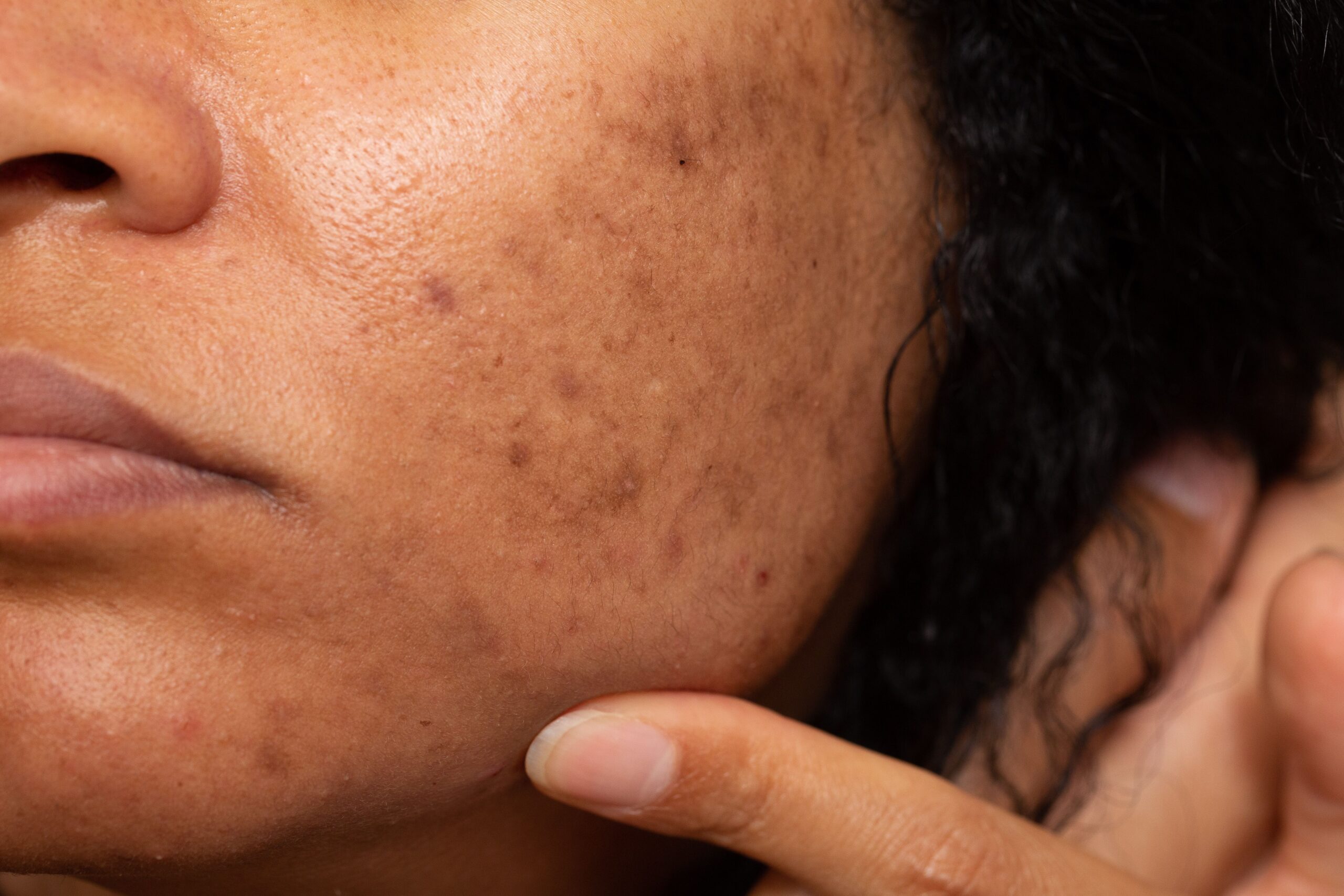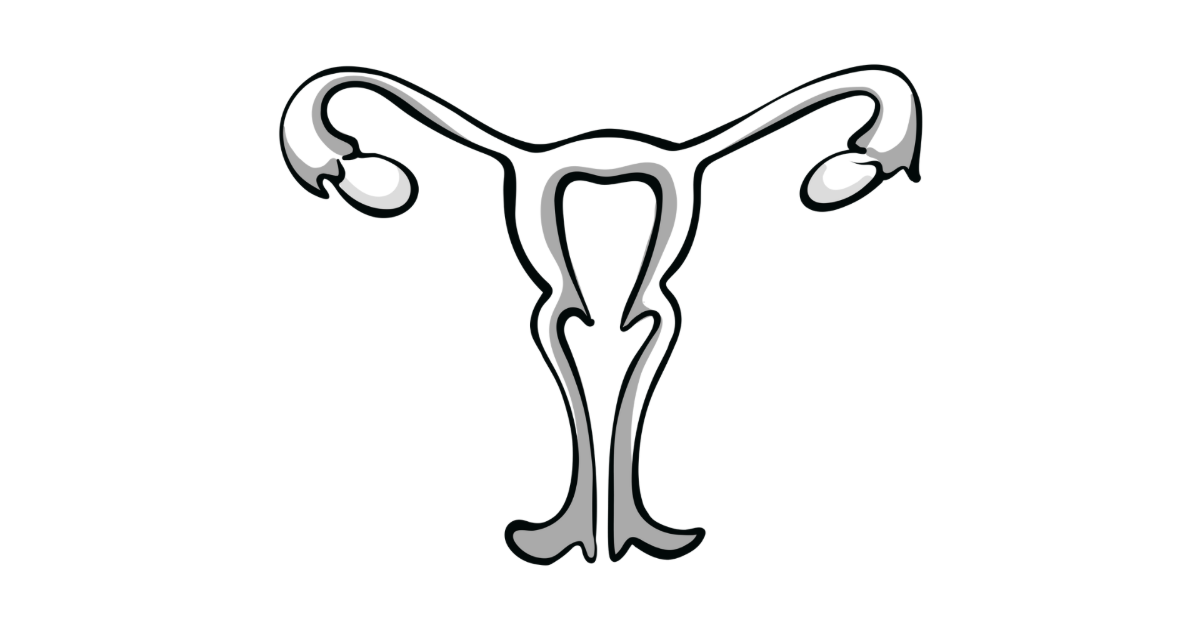Introduction
Sevoflurane is the most frequently administered inhaled anesthetic in pediatric patients owing to its hemodynamic stability, absence of airway irritation, and rapid induction and emergence.1 Nevertheless, a significant limitation of sevoflurane anesthesia in this population is its association with emergence agitation and delirium, which has been reported to occur with an incidence ranging from 10% to 80%.2 Pediatric emergence delirium (ED) is a complex psychomotor disturbance that commonly manifests during the early post-anesthesia period. It is defined by symptoms such as inconsolable crying, involuntary motor activity, restlessness, and disorientation.3 Although ED is typically transient and self-limiting, its occurrence may precipitate a range of postoperative complications, including self-injurious behavior, surgical wound dehiscence or hemorrhage, and the removal of indwelling catheters. Furthermore, ED substantially increases the length of stay in the post-anesthesia care unit (PACU), thereby creating significant challenges for medical staff and diminishing parental satisfaction.4,5
The precise pathogenesis of ED remains elusive. Nevertheless, a variety of pharmacological interventions have been explored for the prevention or management of pediatric emergence delirium, including α2-adrenergic receptor agonists,6 sedatives,7 opioids,8,9 and non-opioid analgesics. Nevertheless, the use of these drugs may result in adverse effects such as bradycardia, respiratory depression, postoperative nausea and vomiting (PONV), and delayed recovery. Given these concerns, it is highly valuable to investigate more suitable alternatives for the prevention of pediatric ED.
Remimazolam, a novel water-soluble ultra-short-acting benzodiazepine, has been safely utilized for sedation in pediatric procedures and for the induction and maintenance of general anesthesia.10,11 Due to the activity of non-specific tissue esterases, it is subsequently rapidly hydrolyzed into a pharmacologically inactive carboxylic acid metabolite (CNS 7054). This characteristic confers the advantages of rapid onset and offset of sedation, as well as a predictable duration of action.12 When utilized for anesthesia, remimazolam exhibits a mild inhibitory effect on respiration and circulation, and its sedative effects can be effectively reversed by flumazenil.13 Remimazolam exhibits a high clearance rate and a short context-sensitive half-life in pediatric patients. After normalization by body weight, its pharmacokinetic properties are comparable to those observed in adults, enabling the development of target-controlled infusion protocols.14
A study conducted by Yang et al demonstrates that administering 0.2 mg/kg of remimazolam at the conclusion of adenotonsillectomy under sevoflurane anesthesia can significantly reduce the incidence of ED.15 Additionally, the research by Cai et al indicates that either a continuous intraoperative infusion of remimazolam at 1 mg/kg/h or a single intravenous bolus dose of 0.2 mg/kg administered at the end of surgery can effectively decrease the incidence of ED in pediatric patients following laparoscopic surgery.16 Although remimazolam demonstrates considerable potential and advantages, its efficacy and role in preventing pediatric ED remain underexplored, particularly regarding the determination of the optimal dosage and administration protocol. Therefore, we aimed to determine the 90% effective dose (ED90) of remimazolam when continuously infused during surgery for preventing ED in children undergoing adenoidectomy or adenotonsillectomy under sevoflurane general anesthesia.
Methods
Study Design
This is a prospective, double-blind, sequential allocation dose-finding study. This study received approval from the Medical Ethics Committee of The Affiliated Women and Children’s Hospital of Ningbo University, China (Approval Number: EC2024-163; Approval Date: December 11, 2024). Prior to the enrollment of patients, we registered the clinical trial at the Chinese Clinical Trial Registry (Registration Number: ChiCTR2400094727; Principal Investigator: Zhongsai Yang; https://www.chictr.org.cn/showproj.html?proj=254654; Registration Date: December 26, 2024). Written informed consent was obtained from the parents or legal guardians of the children prior to their enrollment. This study was conducted in strict compliance with the principles outlined in the Declaration of Helsinki and clinical trial CONSORT.
Patients and Setting
We prospectively recruited patients aged 3–7 years with American Society of Anesthesiologists (ASA) Physical Status I or II who underwent adenoidectomy or adenotonsillectomy under general anesthesia at The Affiliated Women and Children’s Hospital of Ningbo University, located in Zhejiang Province, China, between January 2025 and February 2025. The exclusion criteria were as follows: preoperative respiratory tract infection; incidents in the recovery room (eg, airway spasm, wound bleeding, etc.); allergy to remimazolam; abnormal liver or kidney function; abnormal cardiac function; bradycardia (heart rate less than 60 beats per minute); neurological or psychiatric disorders, including patients with a history of epilepsy, developmental delay, or autism; a history of three or more surgeries; use of anticonvulsant, sedative, or analgesic drugs within two weeks; severe obstructive sleep apnea (apnea-hypopnea index ≥5.0); and declined to participate in.
Study Protocol
All patients were required to fast from solid food for 6 hours and clear liquids for 2 hours prior to surgery. A 22 gauge peripheral vein catheter was inserted in the preoperative preparation room. Upon entering the operating room, standard monitoring was initiated, comprising electrocardiogram (ECG), non-invasive blood pressure monitoring, pulse oximetry, and bispectral index (BIS) monitoring. Prior to anesthesia induction, atropine was administered at a dose of 0.01 mg/kg to inhibit airway secretions. For postoperative analgesia, flurbiprofen axetil was given at a dose of 1 mg/kg (with a maximum dose of 50 mg). To prevent postoperative nausea and vomiting, dexamethasone was administered at a dose of 0.1 mg/kg (maximum dose 5 mg), along with tropisetron at a dose of 0.1 mg/kg (maximum dose 5 mg). The anesthesia induction protocol consisted of propofol at 3 mg/kg, fentanyl at 3 μg/kg, and cisatracurium besilate at 0.1 mg/kg.
Following the successful induction of anesthesia, and once the child was fully muscle-relaxed and unconscious, an endotracheal tube was inserted. Remifentanil was administered via continuous infusion at a rate of 10 to 20 μg/kg/h, the concentration of sevoflurane was titrated within the range of 1% to 3%, and the target BIS value was maintained between 40 and 60. During the operation, vital signs were maintained within 20% of their baseline values through meticulous monitoring and timely interventions with adjustments in the dose of remifentanil and sevoflurane. The end-tidal carbon dioxide pressure (PetCO2) was maintained within the range of 35 to 45 mmHg by finely adjusting the respiratory rate and tidal volume of mechanical ventilation.
Atropine was administered to the patient when the heart rate (HR) decreased to less than 60 bpm. If the mean arterial pressure (MAP) dropped by more than 20% from the baseline value, the dosage of maintenance anesthetic drugs was adjusted accordingly. Additionally, norepinephrine or epinephrine was administered as needed to stabilize the patient’s condition based on the anesthesiologist’s discretion. When the MAP increased by more than 30% of the baseline value, clinicians implemented clinical intervention measures based on their professional experience to ensure the safe and successful completion of both anesthesia and surgery.
Upon completion of the surgery, the administration of maintenance anesthetic drugs was discontinued, and the child, with the endotracheal tube still in place, was transferred to the PACU.
In the PACU, once the child’s spontaneous respiration was fully recovered, neostigmine at a dose of 0.02 mg/kg and atropine at a dose of 0.01 mg/kg were administered as needed to antagonize any residual muscle relaxation. The endotracheal tube was extubated upon fulfillment of predefined criteria, specifically when the tidal volume was adequate (≥6 mL/kg) and the respiratory rate was at least 15 breaths per minute. Then, the child underwent close monitoring and evaluation in the PACU. Upon achieving an Aldrete score of 9 or higher, the child was transferred back to the ward under supervision.
Administration Management of Remimazolam Infusion and the Biased Coin Design Up-and-Down, Sequential Method (BCD-UDM)
Remimazolam was continuously infused from the initiation of anesthesia induction until 5 minutes before the conclusion of surgery, at which point the infusion was terminated. Based on the existing literature16 and the results of the preliminary experiment, the predetermined infusion rate of remimazolam for the first patient was set at 0.8 mg/kg/h, with a dose increment or decrement gradient of 0.1 mg/kg/h. Dose for next patient was based on the response of the previous patient using the BCD-UDM.17 In brief, if the dose administered to the previous patient is considered ineffective (defined as the dose that failed to prevent the patient from experiencing ED), the dose for the next patient will be increased by 0.1 mg/kg/h. Conversely, if the dose administered to the preceding patient is determined to be effective (defined as the dose that successfully prevented the occurrence of ED), the dose for the subsequent patient is established via randomization using the BCD-UDM method with the statistical software R (Γ=0.9). For the next patient, there is an 11% probability [b=(1-Γ)/Γ=0.11] that the remimazolam dose will be decreased by 0.1 mg/kg/h, while there is an 89% probability (1-b=0.89) that it will remain unchanged.
In accordance with the requirements specified in the remimazolam drug instruction manual, the upper limit of the dose for this study was determined to be 3 mg/kg/h. The study drug was prepared by a research assistant who was not involved in either the clinical management or the study. An anesthesiologist in the recovery room is responsible for ED assessment and management. This anesthesiologist, along with the patients and their guardians, was kept unaware of the dose of remimazolam administered.
Diagnosis and Management of Emergence Delirium During the Recovery Period
In the PACU, following extubation of the child’s endotracheal tube, a trained anesthesiologist evaluated the presence and severity of ED during the period from extubation until the child was transferred to the ward. The anesthesiologist systematically documented the corresponding data. If any signs of delirium or restlessness were observed during this period, the Pediatric Anesthesia Emergence Delirium (PAED) scale (Table S1) would be promptly employed for evaluation. A score of ≥10 points on the PAED scale indicates emergence delirium (ED), while a score of ≥15 points suggests severe ED.18 Additionally, the Face, Legs, Activity, Cry, Consolability (FLACC) scale (Table S2) would also be used to assess pediatric pain behavior. On the FLACC scale, a score of 0 indicates no pain and comfort, 1–3 points indicate mild pain, 4–6 points indicate moderate pain, and 7–10 points indicate severe pain.19
Diagnostic process for delirium: postoperative delirium is diagnosed when the PAED score is ≥10 and the FLACC score <4. When the PAED score is ≥10 and the FLACC score is ≥4, indicating moderate to severe pain in the patient, an intravenous injection of 0.1 μg/kg sufentanil is administered. Then, the PAED score is reassessed 5 minutes later. If the reassessed PAED score remains ≥10, ED is diagnosed, irrespective of the FLACC score. Additionally, if a child exhibits ED with a PAED score of ≥15 and the episode duration is ≥2 minutes, it is classified as severe ED.20 If the child does not exhibit ED but the FLACC score is ≥4, rescue analgesics (0.1 μg/kg of sufentanil) are administered. If the patient is asleep, pain assessment is not performed. Patients diagnosed with delirium receive initial comfort measures. Should these measures prove ineffective, an intravenous injection of 1 mg/kg of propofol were administered for treatment and were repeated as necessary. The administration of rescue boluses of propofol and sufentanil was documented.
Data Collection and Outcome Assessment
The primary outcome was the effective or ineffective dose of remimazolam for preventing ED. Secondary outcomes were as follows: PAED scale, time of occurrence and interventions in patients with ED; FLACC scale and dose of rescued sufentanil; patients extubation time (defined as the time interval from the discontinuation of anesthetics to extubation), post-anesthesia recovery time (defined as the time from the discontinuation of anesthetics until the child reaches a fully conscious state, characterized by spontaneous eye opening, normal responses to questions, and compliance with movement instructions), as well as the duration of stay in the PACU (defined as the time interval from transfer to the PACU until departure from the PACU), as well as delayed recovery, which is defined as a length of stay in the PACU exceeding 120 minutes; the incidence of adverse effects during the intraoperative and postoperative recovery periods, such as hypotension, and bradycardia. In addition, the level of preoperative anxiety assessed by the Modified Yale Preoperative Anxiety Scale,21 the anesthesia duration, surgical procedure duration, volume of infused fluids, and concentration of sevoflurane were recorded. The demographic characteristics of patients, including gender, age, weight, height, and BMI, as well as the ASA score, type of surgery, and baseline blood pressure and heart rate, were also systematically recorded.
Statistical Analysis
In a dose-finding study employing the biased coin up-and-down design, the data distribution exhibits both non-independence and an unknown structure. Simulation analyses demonstrate that enrolling a minimum of 20 to 40 patients typically provides robust and reliable estimates of the target dose across the majority of scenarios. To account for potential dropouts and achieve a sufficiently narrow 95% confidence interval (95% CI), this study approximately determined a sample size of 52 pediatric patients.
Continuous data were assessed for normality using the Shapiro–Wilk test. Measurement data conforming to the normal distribution were expressed as mean ± standard deviation (Mean ± SD), and measurement data not conforming to the normal distribution were expressed as median (M) and interquartile range (IQR). Enumeration data were expressed as the number and percentage (%). The ED90 and 95% confidence interval of remimazolam were calculated via the isotonic regression method, which was used as the primary estimate. And Probit regression was also used as a backup estimate in this study. The Pearson χ2 goodness-of-fit test was used to evaluate the satisfaction of the probit model fitting the data. The GraphPad prism software (ver. 10.4.0) was used for graphing. The data processing and statistical analysis of this study were carried out using the SPSS software (ver. 29.0), and the BCD random sequence was generated using the R for Windows software (ver. 4.3.2).
Results
The patient recruitment and follow-up period extended from January 1, 2025, to February 28, 2025 (Figure 1). A total of 58 patients were assessed for eligibility. Among the participants, one patient had a neurological or psychiatric disorder (specifically, autism), two patients had upper respiratory tract infections with a fever exceeding 38 degrees Celsius, and three patients declined to participate in the study. Finally, a total of 52 patients were involved in the study, and all of them successfully completed the final analysis. The demographic and baseline characteristics of the patients are presented in Table 1.
|
Table 1 Demographic and Baseline Characteristics of the Patients
|
 |
Figure 1 Study recruitment diagram.
|
The sequence of allocation, as well as the response to the administration of remimazolam, is illustrated in Figure 2. The estimated ED90 and 95% confidence interval [95% CI] of remimazolam for preventing ED in pediatric patients undergoing adenoidectomy or adenotonsillectomy under sevoflurane general anesthesia was 1.08 mg/kg/h (1.03–1.97 mg/kg/h) with the isotonic regression method and was 1.07 mg/kg/h (1.02–1.26 mg/kg/h) with Probit probability regression. The results of the Pearson goodness-of-fit χ2 test indicated that the probit model exhibited an adequate fit (P = 0.38).
 |
Figure 2 Data of the sequential up-and-down responses of remimazolam for the prevention of ED. The starting dose is 0.80 mg/kg/h, and the dose increment is 0.10 mg/kg/h. Solid dots represent successful prevention of ED, while hollow dots represent failure of preventing ED.
|
Secondary results are shown in Table 2. The mean extubation time for the patients was 29.94 ± 6.53 minutes, the post-anesthesia recovery time was 45.96 ± 10.53 minutes, and the duration of stay in the PACU was 52.58 ± 9.82 minutes. During the study period, sufentanil rescue was administered in 3 patients (5.8%); hypotension was observed in 4 patients (7.7%) during the anesthesia process; there were no cases of nausea and vomiting, delayed recovery, bradycardia, or hypoxemia during post-anesthesia recovery time.
 |
Table 2 Postoperative Outcomes and Complications
|
For patients who experienced ED, the infusion dose of remimazolam, PAED scores, the timing of ED occurrence, and the interventions administered to patients with ED were summarized in Table 3. A total of eight patients developed delirium, as indicated by a PAED score of ≥10. Among them, one child experienced severe delirium (PAED score ≥16), and four patients received propofol treatment for the management of delirium symptoms.
 |
Table 3 Failure of Remimazolam in Preventing ED
|
Discussion
The main finding of this study is that the optimal dose of remimazolam for preventing ED in pediatric patients undergoing adenoidectomy or adenotonsillectomy under sevoflurane inhalation anesthesia is 1.08 mg/kg/h (95% CI: 1.03–1.97 mg/kg/h). Furthermore, no severe adverse effects were observed during remimazolam infusion within the dose range of 0.8–1.2 mg/kg/h in pediatric patients. To the best of our knowledge, this is the first time to explore the dose-response study of remimazolam in preventing ED in pediatric patients.
Currently, the precise pathophysiological mechanisms underlying post-anesthetic delirium in pediatric patients remain incompletely understood. Recognized high-risk factors include the use of sevoflurane inhalation, preoperative anxiety, unstable anesthetic induction, male sex, preschool age, parental anxiety, and certain types of surgeries (eg, craniofacial surgeries).22 In this study, we enrolled preschool pediatric patients aged 3 to 7 years who underwent adenoidectomy or adenotonsillectomy under sevoflurane anesthesia. Our results indicate that in 90% of this kind of population who did not experience ED, the infusion dose of remimazolam was 1.08 mg/kg/h. In addition, our results indicated that 4 out of 18 patients (22%, Figure 2) experienced ED at an infusion dose of 1.0 mg/kg/h, which is obviously higher than that reported by Cai et al16 in whose study the incidence of ED was 5% with remimazolam infusion dose at 1.0 mg/kg/h for pediatric patients who underwent laparoscopic inguinal hernia repair. Carefully comparing the protocols of the two studies, we acknowledged that the different types of surgeries might account for this discrepancy.
The results of current study suggest higher 1.1–1.2 mg/kg/h of remimazolam infusion dose produces less incidence of ED. Given that the pediatric patients in the current study were associated with several high-risk factors for the occurrence of ED during the anesthesia recovery period, we propose that selecting a more appropriate dose of remimazolam (approaching or a little higher than ED90) is particularly critical. This approach can effectively reduce the incidence of ED, alleviate the postoperative management burden on clinical anesthesiologists, and enhance the quality of postoperative recovery for pediatric patients. Additionally, we did not find any undesirable adverse adverse effect associated with high dose infusion in the current study. Therefore, our results suggest the dose of 1.1 and 1.2 mg/kg/h of remimazolam infusion are an effective and safety dose for the study population in the current study.
The precise mechanism by which remimazolam decreases the incidence of ED remains to be further elucidated. Prior investigations indicate that its potential protective effects may be attributed to a variety of factors, including sedative properties, agonistic effects on γ-aminobutyric acid (GABA) receptors, anti-inflammatory capabilities, vasodilatory actions, and antioxidant activities.23 Nevertheless, the continuous administration of remimazolam during BIS-guided anesthesia can effectively reduce the requirement for sevoflurane, thereby decreasing the incidence of ED. However, this hypothesis needs to be further validated, despite the findings of a recent cohort study suggesting that the dose of sevoflurane was not associated with the severity or occurrence of delirium.24 However, it should be noted that opioids, such as remifentanil, are frequently utilized in clinical anesthesia. Although the dosage in the current study is typically determined based on body weight, it remains unclear whether they interact with remimazolam or whether their combined use influences the risk of ED. Further investigation into this area is warranted.
In this study, our protocol specifies that the specific antagonist flumazenil was not used to reverse the effects of remimazolam for rapid awakening in children. The extubation time was 29.94 ± 6.53 min, and the recovery time was 45.96 ± 10.53 min, and no patients experienced delayed recovery, which is similar to prior studies16 indicating that infusion of remimazolam at the study dose does not affect the metabolic profiles and leads to delayed recovery.
A large number of studies have investigated the effects of remimazolam on the prevention and treatment of postoperative delirium across diverse populations, utilizing various protocols, doses, and delivery strategies. These studies recommend a broad infusion dose range of 0.1 to 3.0 mg/kg/h.15,16,25–30 In this study, we possess a distinct advantage in providing dose-response information for the prevention of ED within specific high-incidence populations. Although the ED90 was determined in this study, further investigations into the minimal effective dose for this population using the traditional up-and-down method could provide valuable insights for clinical reference.
When concerns regarding the safety of remimazolam in pediatric use were raised, a study conducted by Fang et al demonstrated that remimazolam exhibited good tolerability for inducing and maintaining general anesthesia in preschool-age children. It was also found to be non-inferior to propofol, with a lower incidence of adverse effects.10 Similar to prior findings, no other severe adverse events were observed in the current study, which reinforces the safety of remimazolam infusion in pediatric patients. However, caution should be paid when large doses are used in specific population.31
This study has several limitations. First, while this study determined the ED90 of remimazolam for preventing ED in preschool age children undergoing adenoidectomy or adenotonsillectomy, it was unable to account for potential confounding effects from other variables that might influence the results. Therefore, further studies are warranted to address various scenarios in clinical practice. Second, variations in anesthesia management protocols, particularly in postoperative pain management, might influence the ED90 results of remimazolam for preventing ED, thereby limiting the generalizability of these findings. Third, despite the integration of the FLACC score and the utilization of the PAED assessment scale for diagnosing delirium—both evaluated by a trained professional physician—the scoring system remains inherently subjective. Consequently, clearly differentiating between delirium and postoperative pain in the PACU poses a significant challenge, which may subsequently affect the results despite measures taken, such as pain management strictly adhering to the study protocol and the ED being reassessed via PAED assessment scale 5 minutes after a FLACC score of ≥4. Fourth, it should be noted that our study enrolled pediatric patients without specifically considering factors such as sex, surgical duration or preoperative anxiety, which may influence ED incidence and dose-response relationships. Further studies investigating the impact of these variables on the dose requirements of remimazolam for preventing ED may be warranted. Finally, the 95% CI of the ED90 lies outside the range of doses examined in this study, and therefore, this value was not directly observed. As a result, clinical application of this dose should be approached with caution. Further studies focusing on relatively higher doses in this area are warranted.
In preschool age children undergoing adenoidectomy or adenotonsillectomy under general anesthesia with sevoflurane, the ED90 of remimazolam for preventing emergence delirium during intraoperative continuous infusion was 1.08 mg/kg/h (1.03–1.97 mg/kg/h). However, cautions should be paid as the 95% CI of the ED90 lies outside the range of doses examined in this study.
Abbreviations
ED, emergence delirium; ASA, American Society of Anesthesiologists; PACU, post-anesthesia care unit; BMI, Body mass index; BIS, Bispectral index; PONV, postoperative nausea and vomiting.
Data Sharing Statement
The datasets generated during and/or analyzed during the current study are not publicly available due to the privacy policy but are available from the corresponding authors on reasonable requests.
Acknowledgment
The authors sincerely express their gratitude to the colleagues and faculty members from the Department of Anesthesiology, Affiliated Women and Children’s Hospital of Ningbo University, Ningbo, China, for their valuable contributions and support throughout the study.
Author Contributions
All authors made a significant contribution to the work reported, whether that is in the conception, study design, execution, acquisition of data, analysis and interpretation, or in all these areas; took part in drafting, revising or critically reviewing the article; gave final approval of the version to be published; have agreed on the journal to which the article has been submitted; and agree to be accountable for all aspects of the work.
Funding
There is no funding to report.
Disclosure
The authors declare that they have no competing interests.
References
1. Kim YH, Yoon SZ, Lim HJ, Yoon SM. Prophylactic use of midazolam or propofol at the end of surgery may reduce the incidence of emergence agitation after sevoflurane anaesthesia. Anaesth Intensive Care. 2011;39(5):904–908. doi:10.1177/0310057X1103900516
2. Vlajkovic GP, Sindjelic RP. Emergence delirium in children: many questions, few answers. Anesth Analg. 2007;104(1):84–91. doi:10.1213/01.ane.0000250914.91881.a8
3. Frelich M, Lečbychová K, Vodička V, et al. Effect of BIS-guided anesthesia on emergence delirium following general anesthesia in children: a prospective randomized controlled trial. Anaesth Crit Care Pain Med. 2024;43(1):101318. doi:10.1016/j.accpm.2023.101318
4. Mason KP. Paediatric emergence delirium: a comprehensive review and interpretation of the literature. Br J Anaesth. 2017;118(3):335–343. doi:10.1093/bja/aew477
5. Fu SH, Miao MR, Zhang LY, et al. Prophylactic application of dexmedetomidine reduces the incidence of emergence delirium in children: a systematic review and meta-analysis. Anaesth Crit Care Pain Med. 2024;43(6):101426. doi:10.1016/j.accpm.2024.101426
6. Zhou D, Yang XD, Wu HY, Xiong GL, Wang LK. Determination of the ED90 of dexmedetomidine infusion to prevent emergence agitation in children undergoing dental rehabilitation with sevoflurane anesthesia: a biased-coin up-and-down sequential allocation trial. Anesth Analg. 2024;139(4):761–769. doi:10.1213/ANE.0000000000006626
7. Shafa A, Rajabi F, Golkar K, Habibzadeh MR. Premedication propofol dose to prevent emergency delirium. Iran J Psychiatry. 2022;17(3):304–311. doi:10.18502/ijps.v17i3.9730
8. Kim MS, Moon BE, Kim H, Lee JR. Comparison of propofol and fentanyl administered at the end of anaesthesia for prevention of emergence agitation after sevoflurane anaesthesia in children. Br J Anaesth. 2013;110(2):274–280. doi:10.1093/bja/aes382
9. He J, Zhang L, Tao T, et al. Nalbuphine reduces the incidence of emergence agitation in children undergoing Adenotonsillectomy: a prospective, randomized, double-blind, multicenter study. J Clin Anesth. 2023;85:111044. doi:10.1016/j.jclinane.2022.111044
10. Fang YB, Zhong JW, Szmuk P, et al. Safety and efficacy of remimazolam tosilate for general anaesthesia in paediatric patients undergoing elective surgery: a multicentre, randomised, single-blind, controlled trial. Anaesthesia. 2025;80(3):259–268. doi:10.1111/anae.16475
11. Lee JH, Lee J, Park SH, Han SH, Kim JH, Park JW. Comparison between remimazolam and propofol anaesthesia for interventional neuroradiology: a randomised controlled trial. Anaesth Crit Care Pain Med. 2024;43(2):101337. doi:10.1016/j.accpm.2023.101337
12. Kim KM. Remimazolam: pharmacological characteristics and clinical applications in anesthesiology. Anesth Pain Med. 2022;17(1):1–11. doi:10.17085/apm.21115
13. Philip AB, Brohan J, Goudra B. The role of GABA receptors in anesthesia and sedation: an updated review. CNS Drugs. 2025;39(1):39–54. doi:10.1007/s40263-024-01128-6
14. Gao YQ, Ihmsen H, Hu ZY, et al. Pharmacokinetics of remimazolam after intravenous infusion in anaesthetised children. Br J Anaesth. 2023;131(5):914–920. doi:10.1016/j.bja.2023.08.019
15. Yang X, Lin C, Chen S, Huang Y, Cheng Q, Yao Y. Remimazolam for the prevention of emergence delirium in children following tonsillectomy and adenoidectomy under sevoflurane anesthesia: a randomized controlled study. Drug Des Devel Ther. 2022;16:3413–3420. doi:10.2147/DDDT.S381611
16. Cai YH, Zhong JW, Ma HY, et al. Effect of remimazolam on emergence delirium in children undergoing laparoscopic surgery: a double-blinded randomized trial. Anesthesiology. 2024;141(3):500–510. doi:10.1097/ALN.0000000000005077
17. Görges M, Zhou G, Brant R, Ansermino JM. Sequential allocation trial design in anesthesia: an introduction to methods, modeling, and clinical applications. Paediatr Anaesth. 2017;27(3):240–247. doi:10.1111/pan.13088
18. Sikich N, Lerman J. Development and psychometric evaluation of the pediatric anesthesia emergence delirium scale. Anesthesiology. 2004;100(5):1138–1145. doi:10.1097/00000542-200405000-00015
19. Peng T, Qu S, Du Z, Chen Z, Xiao T, Chen R. A systematic review of the measurement properties of face, legs, activity, cry and consolability scale for pediatric pain assessment. J Pain Res. 2023;16:1185–1196. doi:10.2147/JPR.S397064
20. Somaini M, Engelhardt T, Fumagalli R, Ingelmo PM. Emergence delirium or pain after anaesthesia–how to distinguish between the two in young children: a retrospective analysis of observational studies. Br J Anaesth. 2016;116(3):377–383. doi:10.1093/bja/aev552
21. Liang Y, Huang W, Hu X, et al. Preoperative anxiety in children aged 2–7 years old: a cross-sectional analysis of the associated risk factors. Transl Pediatr. 2021;10(8):2024–2034. doi:10.21037/tp-21-215
22. Larsen LG, Wegger M, Lé Greves S, Erngaard L, Hansen TG. Emergence agitation in paediatric day case surgery: a randomised, single-blinded study comparing narcotrend and heart rate variability with standard monitoring. Eur J Anaesthesiol. 2022;39(3):261–268. doi:10.1097/EJA.0000000000001649
23. Sigel E, Ernst M. The benzodiazepine binding sites of GABAA receptors. Trends Pharmacol Sci. 2018;39(7):659–671. doi:10.1016/j.tips.2018.03.006
24. Taylor J, Payne T, Casey C, et al. Sevoflurane dose and postoperative delirium: a prospective cohort analysis. Br J Anaesth. 2023;130(2):e289–e297. doi:10.1016/j.bja.2022.08.022
25. Lu Y, Xu Q, Dai H, et al. Remimazolam for the prevention of emergence agitation in adults following nasal surgery under general anesthesia: a prospective randomized clinical controlled trial. BMC Anesthesiol. 2025;25(1):8. doi:10.1186/s12871-024-02875-1
26. Fujimoto D, Obata N, Mizobuchi S. Effectiveness of remimazolam in preventing postoperative delirium in elderly patients with proximal femoral fractures. J Anesth. 2024;38(4):475–482. doi:10.1007/s00540-024-03339-z
27. Fang PP, Hu J, Wei QF, et al. Effect of remimazolam besylate vs propofol on incidence of postoperative delirium in older patients undergoing Hip surgery: a randomized noninferiority trial. Int J Surg. 2025;111(1):1469–1472. doi:10.1097/JS9.0000000000001908
28. Deng Y, Qin Z, Wu Q, et al. Efficacy and safety of remimazolam besylate versus dexmedetomidine for sedation in non-intubated older patients with agitated delirium after orthopedic surgery: a randomized controlled trial. Drug Des Devel Ther. 2022;16:2439–2451. doi:10.2147/DDDT.S373772
29. Zhang J, Zhang J, Wang Y, et al. Effect of remimazolam vs propofol on emergence from general anesthesia in patients undergoing cerebral endovascular procedures: a randomized controlled, non-inferiority trial. J Clin Anesth. 2024;93:111356. doi:10.1016/j.jclinane.2023.111356
30. Wang M, Liu J, Liu W, et al. Effectiveness of perioperative remimazolam in preventing postoperative delirium: a systematic review and meta-analysis. Eur J Med Res. 2025;30(1):122. doi:10.1186/s40001-025-02383-z
31. Xu Q, Qian J, Zhang SQ, Xia F, Hu HJ, Xiao F. Dose-response study of remimazolam combined with remifentanil for attenuating stress response during laryngeal mask airway insertion in elderly female patients: a prospective double-blinded study. Drug Des Devel Ther. 2025;19:1575–1583. doi:10.2147/DDDT.S494426












